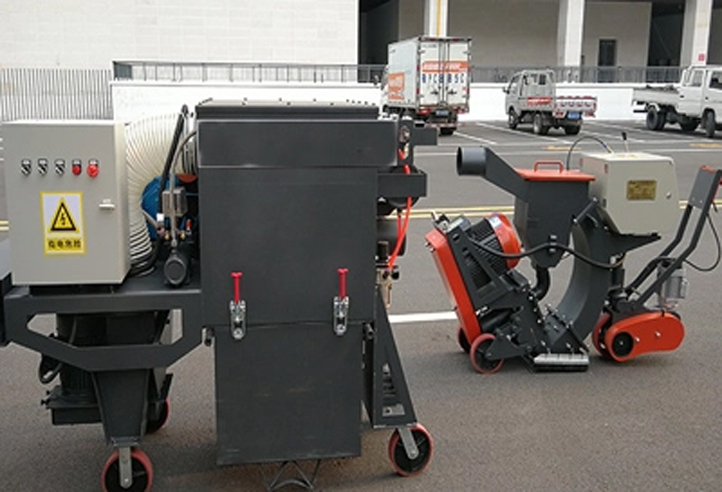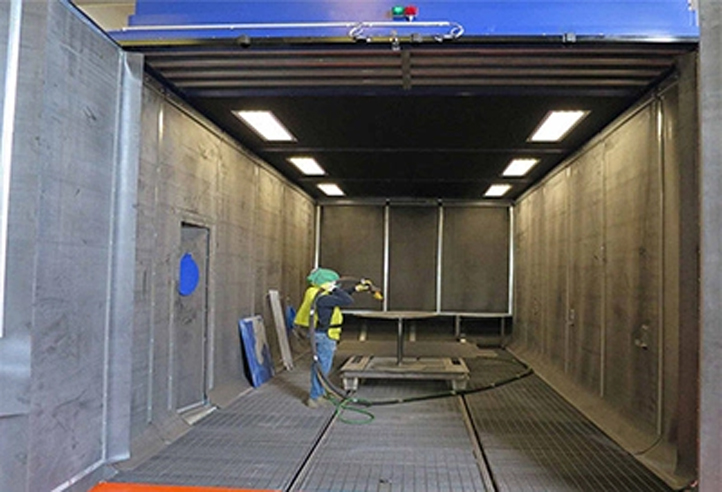A shot blasting machine uses a shot blaster component to propel shot material at high speed, achieving surface cleaning or strengthening. Generally, this equipment can simultaneously perform core removal, cleaning, and sand removal. In many places, this equipment is also referred to as a sandblasting machine or grit blasting machine.

Shot blasting machines can remove oxide scales or sand from the surfaces of cast steel and cast iron, serving as a necessary step for quality inspection of castings. For example, the casing of large turbines must undergo shot blasting before flaw detection to ensure reliable results. Hook type shot blasting machines are divided into single-hook and double-hook types. These machines use two hooks to alternately load workpieces into the shot blasting chamber. The shot blaster propels shot material (0.2~0.8) onto the workpiece surface, achieving a certain roughness, enhancing the appearance, or altering the compressive stress to extend the workpiece’s lifespan. For castings, shot blasting is essential for detecting surface defects such as peeling and sub-surface pores, ensuring high-quality castings.
In modern metal strength theory, increasing the density of dislocations within the metal can enhance its strength. Shot blasting operations can increase the dislocation structure of the metal, thereby improving its strength. This method is particularly effective for metals that cannot be hardened through phase transformation.
Shot blasting can induce compressive stress on the surface of castings, enhancing their tensile strength, corrosion resistance, and fatigue strength. It can also correct distorted thin-walled castings, replacing conventional cold and hot forming processes for large thin-walled castings, avoiding residual tensile stress and achieving beneficial compressive stress.

Bearing Manufacturing: Bearings generally require smooth surfaces. Shot blasting can remove burrs and impurities. Unlike shot peening, shot blasting is used to reduce the fatigue life of parts, increase different surface stresses, and enhance component strength or prevent fretting. According to modern metal strength theory, increasing the density of dislocations within the metal is a primary direction for improving metal strength. Practice has proven that shot blasting is an effective process for increasing metal dislocation structures.
Shipbuilding: Steel plates used in shipbuilding often have rust. Shot blasting is an effective method for rust removal.
Automotive Manufacturing: Many steel plates and castings used in automobiles require polishing while maintaining the original shape and strength of the plates. Shot blasting can achieve polishing without physical damage. Shot blasting machine accessories can remove burrs, membranes, and rust that may affect the integrity, appearance, or definition of parts. Shot blasting can also remove surface contaminants from a partially coated surface, providing a surface profile that increases coating adhesion and strengthens the workpiece.
Hardware Manufacturing: Shot blasting can meet the requirements for flatness, smoothness, and cleanliness of hardware parts.
Electroplating: The requirements for electroplating are similar to those for hardware parts, and shot blasting can also be used for treatment.
Motorcycle Parts Manufacturing: Tumble-type equipment is usually used for shot blasting operations in this field.
In addition to the above, shot blasting machines can be used in steel plate manufacturing to handle burrs on newly produced steel plates. They can also be used in valve manufacturing to grind and polish valve castings, meeting product quality requirements.
Pre-operation Precautions:
Operators must monitor the electrical cabinet indicators to ensure normal operation.
The directional sleeve must be adjusted and replaced in a timely manner.
Operators must inspect the equipment daily, including lubrication and mechanical parts. Lubrication parts include gearboxes, hydraulics, oil mist devices, and bearing chains. Mechanical parts include wear conditions of rotating parts and wear parts. Wear conditions should be recorded daily, and worn parts should be replaced promptly.
Check the amount of steel shot daily to ensure it is sufficient.
Ensure timely lubrication of all parts.
All personnel entering the shot blasting chamber must wear safety goggles and helmets.
Usage Tips:
Adjust the gates of the dust removal system’s branch pipes to distribute airflow reasonably, enhancing dust removal efficiency. Ensure regular cleaning of the dust collector.
When workpieces cannot be increased, adjust the directional sleeve to maximize the amount of shot material hitting the workpieces, increasing the lifespan of the protective plates and reducing wear.
During shot blasting, place as many workpieces as possible in the blasting area to improve cleaning efficiency and reduce wear on the protective plates, extending their lifespan.